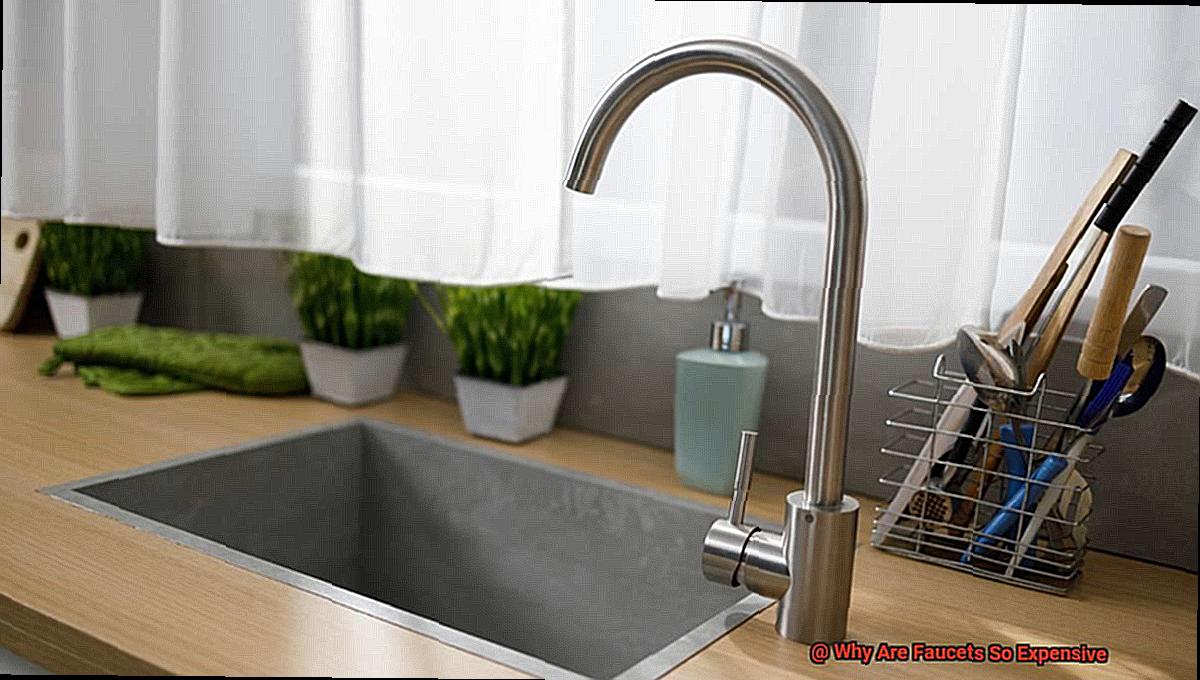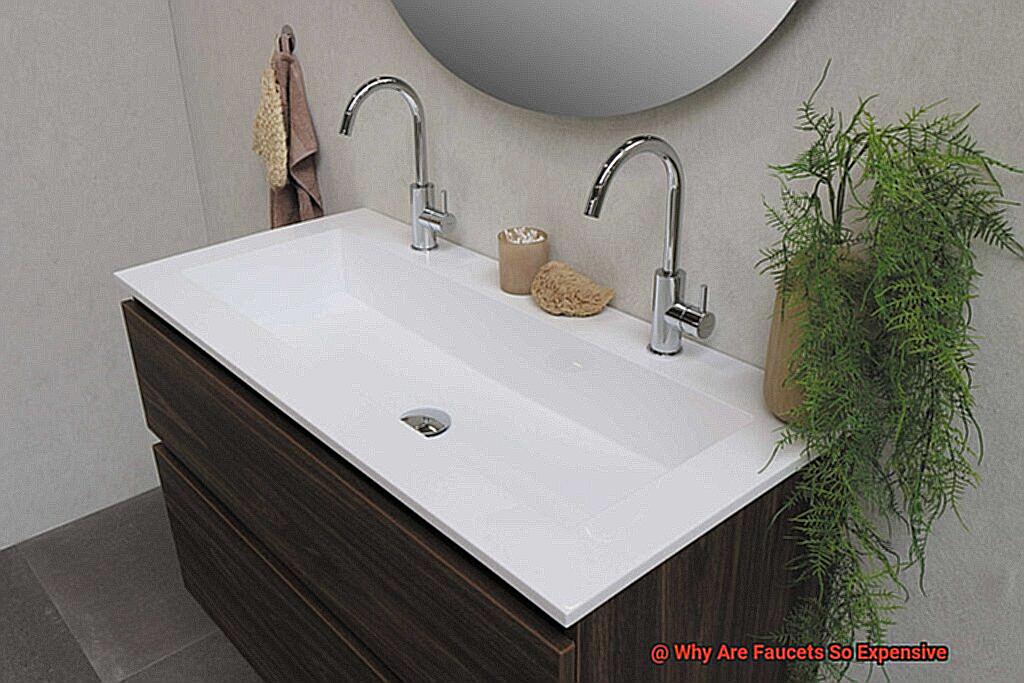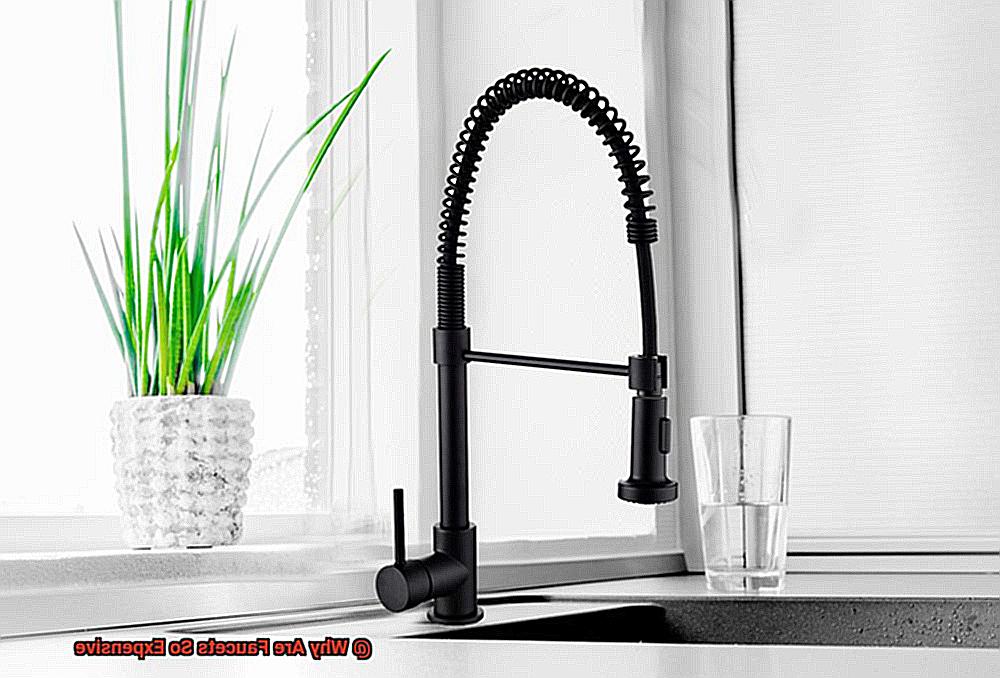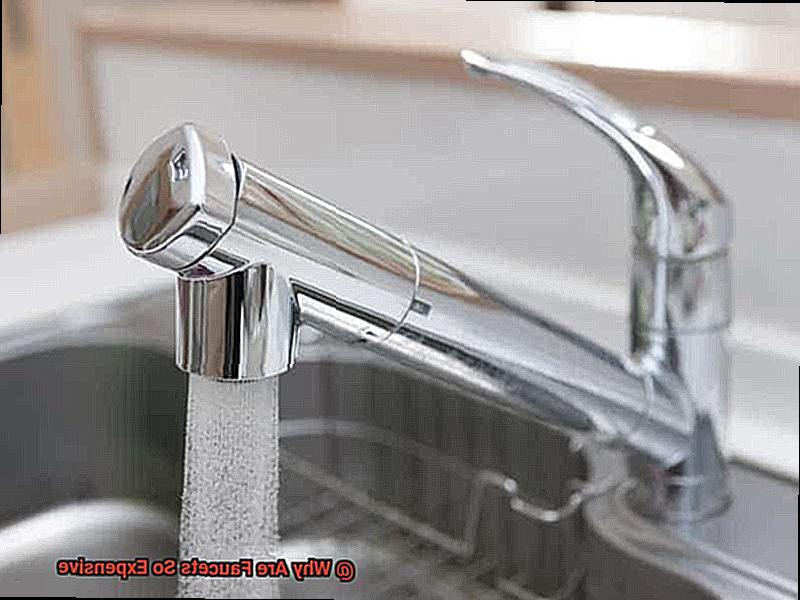Have you ever found yourself staring at a faucet price tag, wondering how something so small could cost so much? If so, you’re not alone. Many homeowners are left scratching their heads when they see the price of a high-quality faucet. But the truth is, these fixtures are more than just simple taps that dispense water.
Faucets are crafted with engineering precision and meticulous attention to detail. From the design process to the manufacturing stage, every aspect of a faucet is carefully considered to ensure optimal functionality and durability. And that level of craftsmanship comes with a price tag.
But it’s not just engineering that drives up the cost of faucets. The materials used in their construction also play a significant role in determining their price point. High-end models often feature premium materials like solid brass or stainless steel, which offer superior durability and resistance to wear and tear.
And let’s not forget about brand reputation. Established brands with a long history of quality craftsmanship and innovation command higher prices due to their reputation for excellence.

In this article, we’ll delve into the various factors that contribute to the cost of faucets. We’ll explore different types of faucets and why some are more expensive than others. We’ll also take a closer look at materials used in faucet manufacturing and how they impact both function and aesthetics.
Whether you’re renovating your home or simply looking for an upgrade, understanding why faucets come with such high price tags can help you make informed purchasing decisions. So buckle up as we uncover the mystery behind why faucets don’t come cheap.
Contents [show]
What Materials Are Used for High-End Faucets?
Luckily, high-end faucets are designed to withstand heavy usage and are crafted from premium materials like brass, stainless steel, and bronze. These materials not only offer durability but also resist corrosion and tarnishing, ensuring your faucet remains in top condition for years to come.
Brass is a popular choice for high-end faucets due to its ability to handle frequent use without showing signs of wear and tear. It’s also easy to maintain and clean, making it an ideal choice for busy households. Stainless steel, on the other hand, is often used in commercial settings due to its resistance to corrosion and staining. It’s also incredibly hygienic, making it a great option for kitchens and bathrooms.
For those looking for a touch of luxury, bronze is the perfect choice. Its warm, rich color adds elegance to any space while also being resistant to tarnishing and corrosion. Other materials used for high-end faucets include nickel, copper, and even gold. Each material offers its own unique aesthetic appeal and durability.
Investing in a high-quality faucet made from premium materials may seem costly at first, but it can save you money in the long run by avoiding costly repairs or replacements. High-end faucets are crafted using precision machining techniques and require skilled labor to produce. They’re made to last and provide superior performance and longevity.
How Much Research and Development Goes Into Creating Quality Faucets?
Well, it’s no secret that it takes a considerable amount of research and development to produce a product that meets strict quality standards. Faucet manufacturers invest a significant amount of time and resources into designing and testing their products before they hit the market. But why do they go to such great lengths?
Firstly, faucet manufacturers use only the best materials to ensure that their products are durable, corrosion-resistant, and have a long lifespan. For instance, brass is a popular material used for the faucet body due to its strength and durability. Ceramic discs and stainless steel are also commonly used in faucet construction for their longevity. The quality of these materials is reflected in the price of the finished product.
However, it’s not just about the materials. Manufacturers also invest in the latest technologies to create innovative designs that meet consumer needs. They’re constantly looking for ways to improve their products with features like touchless sensors, adjustable water flow rates, and temperature control settings. These advanced features require significant research and development to perfect.
When you invest in a high-quality faucet, you’re not just getting a product that looks good; you’re getting a product that’s been designed with your needs in mind. Manufacturers put in countless hours of research and development to ensure that their faucets are reliable, durable, and long-lasting. In fact, investing in a high-end faucet is ultimately a smart decision that can save you money in the long run by avoiding costly repairs or replacements.
Imagine high-quality faucets as superheroes – they’re designed to withstand heavy usage and resist corrosion and tarnishing while providing superior performance and longevity. And just like superheroes have undergone years of training and development to become who they are today, these faucets have undergone extensive research and development to become the reliable products they are today.
What Is the Manufacturing Process for High-End Faucets?
The process is nothing short of fascinating and involves skilled craftsmen, meticulous attention to detail, and the use of only the finest materials. It’s like creating a masterpiece that not only looks gorgeous but also performs flawlessly.

The manufacturing process for high-end faucets begins with the design phase. This includes deciding on the faucet’s shape, size, and style. Once the design is finalized, a prototype is created and tested for quality and durability to ensure it meets the manufacturer’s strict standards.
Next comes the production process, where the faucet body is cast using high-quality metals such as brass or stainless steel. These materials are chosen for their durability and resistance to corrosion. Once cast, the faucet undergoes polishing and plating with finishes such as chrome or brushed nickel to give it a long-lasting shine.
Assembling the faucet is a delicate process that involves putting together various components such as valves, handles, and spouts. Each component undergoes rigorous inspection to ensure that it meets the manufacturer’s quality standards. Finally, the faucet undergoes thorough pressure and leak tests to ensure it functions flawlessly.

The manufacturing process for high-end faucets is a time-consuming and labor-intensive process that requires skilled craftsmen and top-quality materials. This is why these faucets are often more expensive than lower-end models. However, investing in a high-quality faucet can save you money in the long run by avoiding costly repairs or replacements.
Does Brand Name Play a Role in the Cost of Faucets?
The answer is a resounding yes – brand name plays a significant role in the cost of faucets. But why is that?
High-end brands such as Kohler, Delta, and Moen are renowned for their quality and innovation. They invest heavily in research and development, use premium materials, and have strict quality control measures in place to ensure their products meet the highest standards. As a result, their products come with a higher price tag.
However, it’s not just about the brand name itself. Each brand has different lines of faucets that affect the cost. Some offer budget-friendly lines that still maintain high-quality standards, while others have luxury lines with advanced features and intricate designs at a premium price.
But don’t be fooled – just because a faucet has a high price tag doesn’t necessarily mean it’s the best option for everyone. There are many reputable brands and lines that offer quality products at lower price points, making them an excellent option for those on a tighter budget.
Ultimately, the decision to invest in a high-end brand or line of faucets depends on individual preferences and needs. If you prioritize style and advanced features, then a luxury faucet may be worth the investment. However, if you’re looking for something more budget-friendly that still delivers on functionality and durability, there are plenty of options out there for you too.
When it comes to choosing a faucet, remember that it’s an investment in your home. Take your time to research different brands and lines to find the one that best fits your needs and budget. A high-quality faucet can save you from costly repairs or replacements in the long run, so it’s worth investing in one that will last.
Are Less Expensive Faucets from Unknown Brands Any Good?
While budget-friendly faucets can be an attractive option, it’s important to weigh the potential risks and benefits before making a decision.
One of the main benefits of purchasing a cheaper faucet is the cost savings. You may be able to find a faucet that fits your needs and budget without breaking the bank. However, it’s crucial to keep in mind that cheaper faucets may not be made with the highest quality materials, which can impact their durability over time.
On the other hand, well-known brands like Kohler, Delta, and Moen often use higher quality materials like solid brass and ceramic disc valves that are designed to last longer and resist corrosion. These brands also typically offer longer warranties on their products, providing peace of mind in case anything goes wrong.
It’s important to research the materials used in a faucet’s construction and any warranties offered by the manufacturer before making a purchase. Cheaper faucets may be more prone to wear and tear over time, while well-known brands invest in materials that ensure longevity.
Ultimately, the decision to purchase a less expensive faucet from an unknown brand or invest in a higher quality option from a well-known brand comes down to personal preference and budget.
If you’re on a tight budget and don’t mind taking a chance on a lesser-known brand, it may be worth considering.
However, if you’re looking for a faucet that will last for years to come and come with a warranty, it’s worth investing in a higher quality option.
7X8UOQGxrVE” >
Conclusion
To sum up, faucets are not just ordinary taps that dispense water. They are crafted with meticulous attention to detail and engineering precision, using top-quality materials such as brass, stainless steel, and bronze to ensure optimal functionality and durability. The manufacturing process for high-end faucets is labor-intensive and time-consuming, requiring skilled craftsmen and premium materials. These factors contribute to the higher price tag of faucets.
Another factor that affects the cost of faucets is brand reputation. Established brands with a long history of quality craftsmanship and innovation command higher prices due to their reputation for excellence.
While investing in a high-quality faucet made from premium materials may seem expensive at first glance, it can save you money in the long run by avoiding costly repairs or replacements. Precision machining techniques are used to craft high-end faucets, which require skilled labor to produce. They’re built to last and offer superior performance and longevity.
When selecting a faucet, it’s important to take your time researching different brands and lines to find one that fits your needs and budget.






